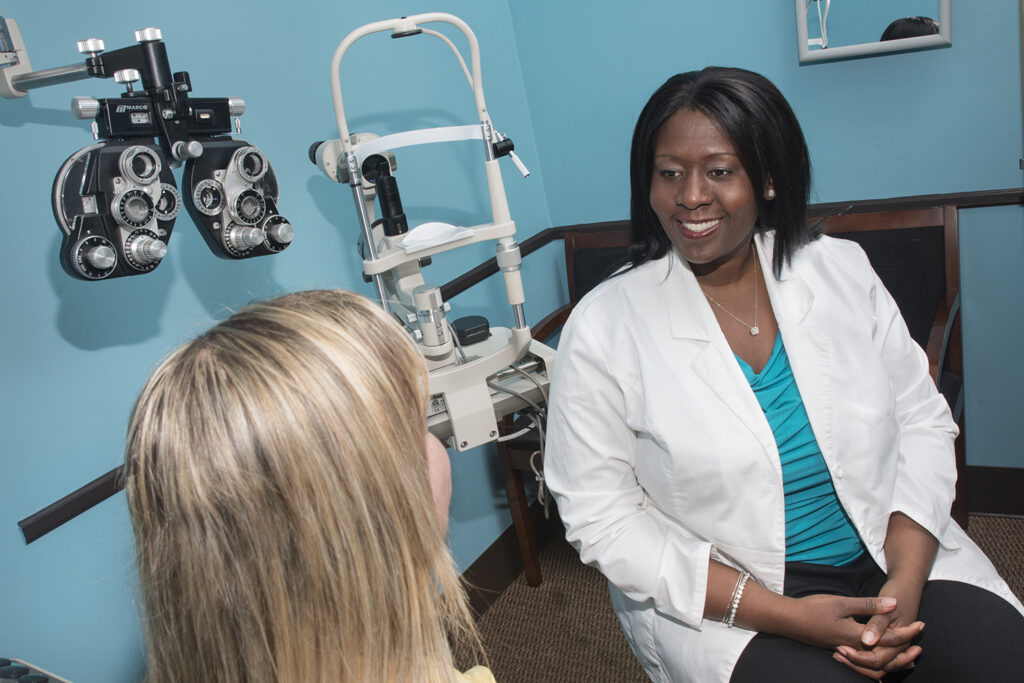November is Diabetic Eye Disease Month:

Protecting Vision and Promoting Awareness
November is Diabetic Eye Disease Month, a crucial time to raise awareness about the impact of diabetes on eye health. For women optometrists, this month presents an opportunity to educate patients, advocate for early detection, and promote preventive measures to protect vision. Diabetic eye diseases, including diabetic retinopathy, macular edema, cataracts, and glaucoma, can lead to severe vision loss if left untreated. This blog explores the significance of Diabetic Eye Disease Month, highlights key information about diabetic eye diseases, and offers strategies for promoting eye health among diabetic patients.
Understanding Diabetic Eye Diseases
1. Diabetic Retinopathy: Diabetic retinopathy is the most common diabetic eye disease and a leading cause of blindness in adults. It occurs when high blood sugar levels damage the blood vessels in the retina, leading to swelling, leakage, or abnormal blood vessel growth.
Example: Lisa, a 45-year-old diabetic patient, noticed blurry vision and frequent floaters. After a comprehensive eye exam, her optometrist diagnosed her with early-stage diabetic retinopathy. With timely treatment and proper blood sugar management, Lisa was able to prevent further vision loss and maintain her eye health.
2. Diabetic Macular Edema (DME): DME is a complication of diabetic retinopathy where fluid accumulates in the macula, the central part of the retina responsible for detailed vision. This condition can significantly impair vision if not treated promptly.
3. Cataracts: Diabetics are at a higher risk of developing cataracts at a younger age. Cataracts cause the lens of the eye to become cloudy, leading to blurry vision and, if untreated, eventual blindness.
4. Glaucoma: Diabetes doubles the risk of glaucoma, a group of eye diseases that damage the optic nerve and can lead to irreversible vision loss. Regular eye exams are essential for early detection and management of glaucoma.
The Importance of Diabetic Eye Disease Month
1. Raising Awareness: Many people with diabetes are unaware of the risks associated with diabetic eye diseases. Diabetic Eye Disease Month aims to educate the public about these risks and the importance of regular eye exams.
Psychological Insight: According to a study by the Centers for Disease Control and Prevention (CDC), increased awareness and education about diabetic eye diseases lead to higher rates of early detection and treatment, ultimately reducing the incidence of severe vision loss.
2. Promoting Early Detection: Early detection of diabetic eye diseases is critical for effective treatment. Regular comprehensive eye exams can identify changes in the eyes before symptoms become noticeable.
3. Encouraging Preventive Care: Diabetic Eye Disease Month emphasizes the importance of managing diabetes through a healthy lifestyle, which includes proper diet, regular exercise, and blood sugar control. Preventive care can significantly reduce the risk of developing diabetic eye diseases.
Example: Dr. Susan, an optometrist, encourages her diabetic patients to schedule annual eye exams and provides educational materials on maintaining healthy blood sugar levels. Her proactive approach has helped many patients detect and manage diabetic eye diseases early.
Strategies for Promoting Eye Health Among Diabetic Patients
1. Comprehensive Eye Exams: Encourage diabetic patients to have annual comprehensive eye exams, even if they do not experience vision problems. Early detection is key to preventing severe vision loss.
2. Patient Education: Provide educational resources about the connection between diabetes and eye health. Inform patients about the symptoms of diabetic eye diseases and the importance of blood sugar management.
Example: Optometrist clinics can host informational workshops during November, focusing on diabetic eye disease awareness. These workshops can include presentations, Q&A sessions, and handouts with essential information.
3. Collaboration with Healthcare Providers: Work closely with primary care physicians and endocrinologists to ensure a multidisciplinary approach to managing diabetic patients. Coordinated care can lead to better overall health outcomes.
4. Support and Resources: Provide patients with resources such as dietary guidelines, exercise plans, and support groups to help them manage their diabetes effectively.
Inspirational Example: Consider the story of Mary, a diabetic patient who joined a support group for diabetics. With the encouragement and shared experiences of others, she adopted healthier lifestyle habits, leading to better blood sugar control and improved eye health.
Conclusion
Diabetic Eye Disease Month is a critical time to raise awareness, promote early detection, and encourage preventive care to protect vision. For women optometrists, this month offers an opportunity to make a significant impact on the lives of diabetic patients by educating them about the risks of diabetic eye diseases and the importance of regular eye exams.
By emphasizing comprehensive eye exams, patient education, and collaborative care, we can help prevent vision loss and improve the quality of life for those living with diabetes. Let’s use November to advocate for eye health and ensure that our patients are equipped with the knowledge and resources they need to protect their vision. Together, we can make a difference and help our patients see a brighter, healthier future.





